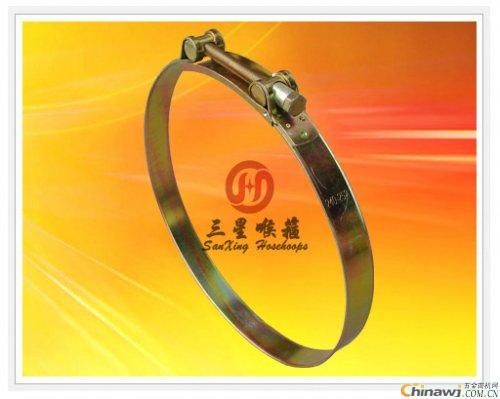1. Factors Affecting the Installation Quality of the Hose Clamp:
(1) The clamp itself must be free from defects such as air bubbles, blisters, and shrinkage cavities. Any visible flaws can compromise the structural integrity and sealing performance of the joint.
(2) The material and performance of the sealing ring must meet specified standards. The sealing surface should be smooth, without air bubbles, impurities, cracks, or unevenness. It is important to avoid using aged rubber rings, as they may lose elasticity and fail to provide a proper seal.
(3) The movement distance of the snap ring in the clamp should theoretically be half of the pipe’s expansion and contraction. However, this value should be measured accurately during installation. If the movement is insufficient, the pipeline's ability to expand and contract will be compromised. To ensure optimal sealing, the end pipes are matched with the clamps before leaving the factory. In real projects, it is not advisable to replace the end pipe with a regular one. The end face of the pipe must be perpendicular to its axis and flat. If the dimensions are not standard, the expansion and contraction capacity of the joint will decrease, leading to poor performance.
(4) The diameter of the end pipe should be selected with a slight positive tolerance. If it is too small, the clamping force of the clamp on the sealing ring may be inadequate, which can affect the sealing effectiveness of the joint.
2. Installation Precautions:
(1) It is essential to control the distance L between the snap ring and the end pipe. This should be done according to the manufacturer's instructions. When the gap between the two pipe ends is at its minimum, the snap ring should just touch the slope.
(2) Once the position of the snap ring is fixed, the size of the gap between the two pipes should be calculated based on the pipe's elongation and the ambient temperature during installation. Proper dimensional tolerances must be maintained during construction to ensure accuracy.
(3) When the movement distance is fixed, the weld height and width of the snap ring and the end pipe play a significant role. A larger perpendicularity error between the snap ring plane and the end pipe axis results in reduced expansion and contraction capability, which negatively affects the joint's performance.
(4) During welding, splashing impurities can damage the sealing surface. Before installation, any welding slag on the sealing area must be removed to ensure a proper seal.

The clamp connection is a modern method of connecting steel pipes, also known as groove connection. It offers numerous advantages, including ease of installation, high strength, and reliable sealing. According to the design specifications for sprinkler systems, the piping should be connected using grooved joints, threaded joints, or flanged connections. For pipes with a diameter of 100mm or larger, flanges or grooved joints are recommended in specific sections to ensure stability and safety.
The eye nut refers to the part that the nut and Bolt or Screw are screwed together to play a fastening role. It is an essential part for all production and manufacturing machinery. The lifting eye nut is a hanger commonly used in engineering. There is a screw thread under the nut, which can be drilled according to its different specifications and fixed by the screw mouth.
Eye Nut,Lifting Eye Nut,Eye Nuts,Stainless Steel Eye Nut
Jiangsu Jiajie Special Screw Co., Ltd , https://www.jiajiescrewcompany.com